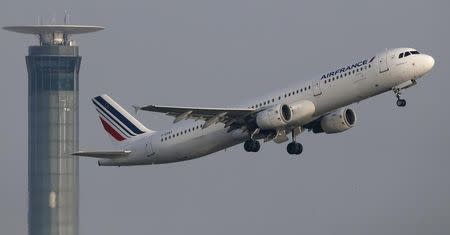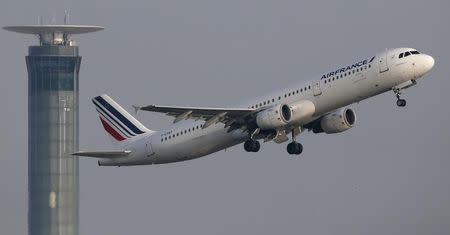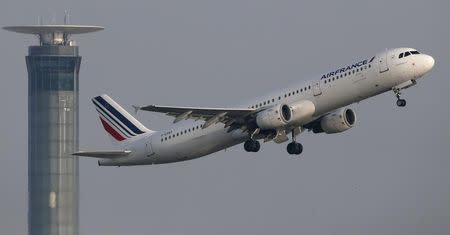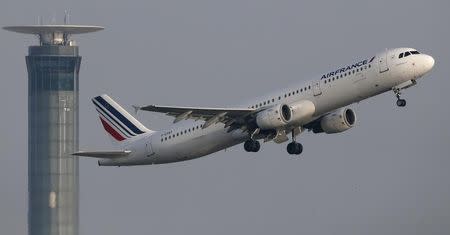Exclusive - Air France faces new safety probe after freighter scare
By Tim Hepher
PARIS (Reuters) - Air France faces its second safety investigation in as many weeks after pilots were forced to recover in mid-takeoff after entering the wrong data into the computer of a cargo jet, airline and safety officials said.
The mistake over the plane's weight was discovered when the Boeing 777 freighter accelerated too slowly on the runway at Paris Charles de Gaulle airport on May 22.
Underestimating the weight can result in a plane trying to perform its takeoff without enough thrust or speed, increasing the risk of hitting the ground with the tail or overshooting the end of the runway.
A person familiar with the matter said the weight entered into the system of the Mexico-bound jet was drastically lower than the correct value, lagging by as much as 100 tonnes, which is more than a quarter of its maximum takeoff weight.
To compensate, pilots had to override previous settings and throttle the aircraft's two engines to their maximum to avoid scraping the ground with the back of the plane.
Air France confirmed the incident in response to a query from Reuters and said the crew had been taken off flying duties after reporting the error on reaching their initial destination.
"Having understood that the airplane was accelerating too slowly, the crew immediately reacted and applied full power. The aircraft then took off normally," an Air France spokesman said in an emailed statement.
A spokeswoman for France’s BEA air crash investigation agency said it had launched an investigation in addition to the airline’s internal inquiries.
"I confirm that an investigation has been opened in response to information provided by Air France," she said.
It is the second time this month that Air France has grounded one of its crews and faced a BEA investigation after a Boeing 777 jetliner narrowly avoided hitting Mount Cameroon, an active volcano and the highest peak in Central Africa.
DATA RISK
In both incidents, the airline said crew had identified the problems in time and responded correctly.
The BEA has already alerted the industry to the risks of inserting faulty data into modern cockpit systems.
Advances in automation since the 1990s are credited with making flying safer, but there have been about a dozen cases in the past two decades when systems were led astray by wrong data.
Pilots are trained to overcome this with repeated cross-checks, but there have been concerns about crews being overloaded or distracted during busy flight preparations.
Safety experts say the so-called "hurry up syndrome" is a growing concern as traffic increases, though some aircraft now include systems designed to make it harder to enter errors.
In a 2008 study, the BEA said that slow and underpowered takeoffs can lead to a “loss of control of the aircraft”. In the worst such incident in October 2004, a Boeing 747-200 operated by MK Airlines overshot the runway at Halifax, Canada, and caught fire, killing all seven crew.
The latest cockpit scare echoes an accident in 2009 when an Emirates jet hit lights and an antenna at the end of the runway in Sydney. Investigators found that the A340's crew had also been 100 tonnes out when tapping in the crucial weight data.
Air France said that, based on current information, "we have not identified a situation that could have led to an accident", but the BEA will examine whether to make new recommendations.
After accusations of complacency following the crash of a jet in the Atlantic in 2009, Air France has sought to overhaul its culture and persuade pilots to be frank about errors to help to improve safety, but unions say they remain overstretched.
(Editing by Geert De Clercq and David Goodman)






